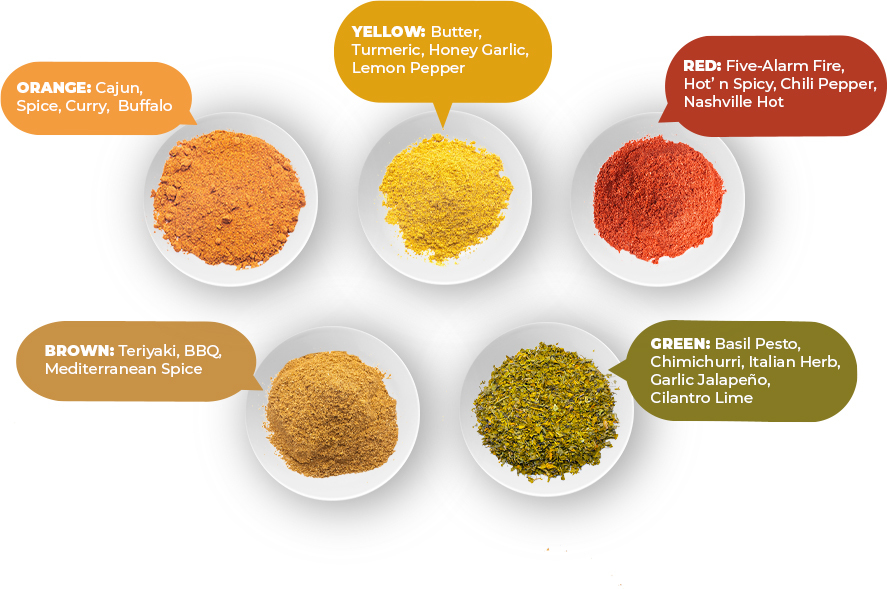Sensory Innovation for Plant-Based Chicken Products
Plant-Based Meat Continues to Appeal to the Masses
The popularity of plant-based meat is undeniable and growing rapidly, reaching far beyond its first consumer target demographics of vegetarians and vegans, and now specifically marketing to animal meat eaters.

“What we are seeing across a number of our food businesses is that the plant-based trend is global. Consumer interest seems high in almost every region. We are creating color, flavor, and extract technologies to meet the global demand coming from food manufacturers,” said Paul Manning, President and CEO of Sensient Technologies.
As the “flexitarian” diet gains momentum, consumer demand continues to grow, and food science innovation is racing ahead to help manufacturers be ready. Sensient’s portfolio of turn-key solutions that include industry-leading natural food colors, flavors, and taste technologies can help brands get to market quicker. Ensuring the stability and performance of natural sensory solutions in plant-based proteins is extremely tricky development work, especially when you consider the following statistic stressing the importance of an enjoyable sensory experience:

In response to consumer demand, many companies are still working towards launching their first-generation plant-based meat product, and interest doesn’t appear to be slowing down, as today’s consumers are even exploring options beyond beef analogues and seeking unique offerings like chicken, pork, and seafood substitutes.
Chicken and other white meats (both plant-based and “animal”) are benefiting from recent scrutiny of the health implications of red meat consumption, making plant-based chicken a shining opportunity in this emerging meatless market space. As more companies, both small and large, enter this category, quality of products will be a critical differentiator, and the sensory component plays a huge part in crafting a high-quality, plant-based meat product.
In order to protect your brand’s reputation in this rapidly moving space, Sensient has implemented the industry’s most robust food color safety program. You can rest assured that your plant-based natural colors will not leave you exposed to a recall risk.

The Value of Natural Food Color in Plant-Based Chicken
Color is the first indicator of flavor perception and overall quality to consumers. With the flexitarian consumer segment, plant-based products are in direction competition with animal meats, and if a meatless product looks funky, consumers are quick to shy away and even give it a chance.
Most plant-based meat formulations visually begin as an unappealing brown or beige color inherent from the protein source. While plant-based beef has a comparatively straightforward color target, meatless offerings like chicken pose greater complexities and variables to product developers.
Creating Visual Appeal in Plant-Based Chicken Applications
Sensient’s plant-based color technologists develop natural solutions based on target visuals. With chicken, there are multiple options depending on product positioning: refrigerated, frozen, food service, etc. For refrigerated plant-based chicken offerings, most color requests want to mimic actual animal meat as closely as possible, starting as a raw pink color then shifting to golden white after the consumer cooks it. In this instance, a blend of natural red, white, and brown colors is necessary…

When innovating in the frozen or foodservice plant-based chicken space, we’ve seen less focus in achieving that raw pink chicken shade and more attention on the visual of a post-cooked white chicken appearance. For this option, a simple blend of a natural golden and white color like a Sienna™ fruit juice and Avalanche™ combination. A golden-brown natural color component in this blend can also help to create a griddled or grill mark visual too.

Another visual scenario for plant-based chicken is naturally colored breading that brings forward different flavor profiles. For breading, heat-stable, warm savory colors are the best option, since they will stand up to the heat associated with baking or deep-frying. Sensient’s innovative heat-stable SupraRed™ beet juice solution can liven up your visual of spicy flavors like hot buffalo, Thai chili, or Nashville hot. Natural orange color solutions from paprika extract and yellows from annatto also lend themselves to robust savory flavor profiles for plant-based chickens, and both are cook-stable. To help with color consistency and achieving that perfect golden fried visual in breading, a natural heat-stable brown is needed. Although caramel color can provide a wide range of browns, Sienna™ fruit juice offers a cost-effective, clean-label alternative to caramel for the desired shades.
Naturally colored topical seasonings are another way for breaded plant-based chicken products to visually cue different flavor profiles. Natural lakes such as the Microfine™ portfolio, an aluminum-free natural color line that simulates synthetic lakes while delivering superb visual appeal and intense color shades is an exciting technology here.
Any shade under the rainbow is available in the Microfine™ line—check out some of our ideas.
Natural Taste Solutions for Plant-Based Chicken Products
While visual appeal first entices consumers to grab the product off-shelf or order from a menu, the taste solution (aroma, flavor, and mouthfeel) is critical to driving repeat purchases. In such high plant-based protein product matrixes, flavor off-notes associated with the protein source are an inevitable obstacle to overcome. Each protein source—from mycoprotein to pea to mung bean—brings their unique and individual taste challenges to a product formulation ranging from bitter to chemical flavor notes. Adding a natural chicken flavor is often not enough to mask the protein flavors and alternative grains used to bulk or fortify the meatless chicken product, but fortunately, there are complete taste solutions available to address this challenge.
In chicken-type plant-based products, flavor creation is a balancing act, because they are much more delicate with a subtlety that beef-type flavors lack. Natural beef flavor notes are deep and distinct; whereas, chicken is lighter and more complex to replicate in plant-based systems. Sensient Flavors solutions that mask undesirable notes are natural flavor options that allow developers to hide these unappealing notes from vegetable protein sources. Sensient’s plant-based meat flavor experts can create natural chicken flavors with specialty-cooked notes like “roasted chicken”, “fried chicken”, or “broiled chicken”.

Our flavor solution toolbox includes natural and vegan flavors, yeast extracts, HVPs, and mouthfeel technologies–all provide flavor boost without any animal meat-derived ingredients. We recently launched a flavor enhancement technology that adds moisture back to the mouthfeel experience in plant-based meat products that are typically dry or chalky due to the protein source. It’s an exciting innovation that improves the overall taste profile and creates a much more pleasing and accepted end product.
Increase Speed to Market with Turn-Key Natural Color and Flavor Solutions
Avoid the many back and forth iterations of a disjointed development process with natural food color and taste solutions by utilizing Sensient’s turn-key sensory solutions for a streamlined, holistic approach to formulation success. Balancing the complex interactions of natural plant-based ingredient systems of color and taste becomes much easier when you have all solutions under one roof with an extensive team of experts.
Start development work today by initiating a kick-off conversation here.















